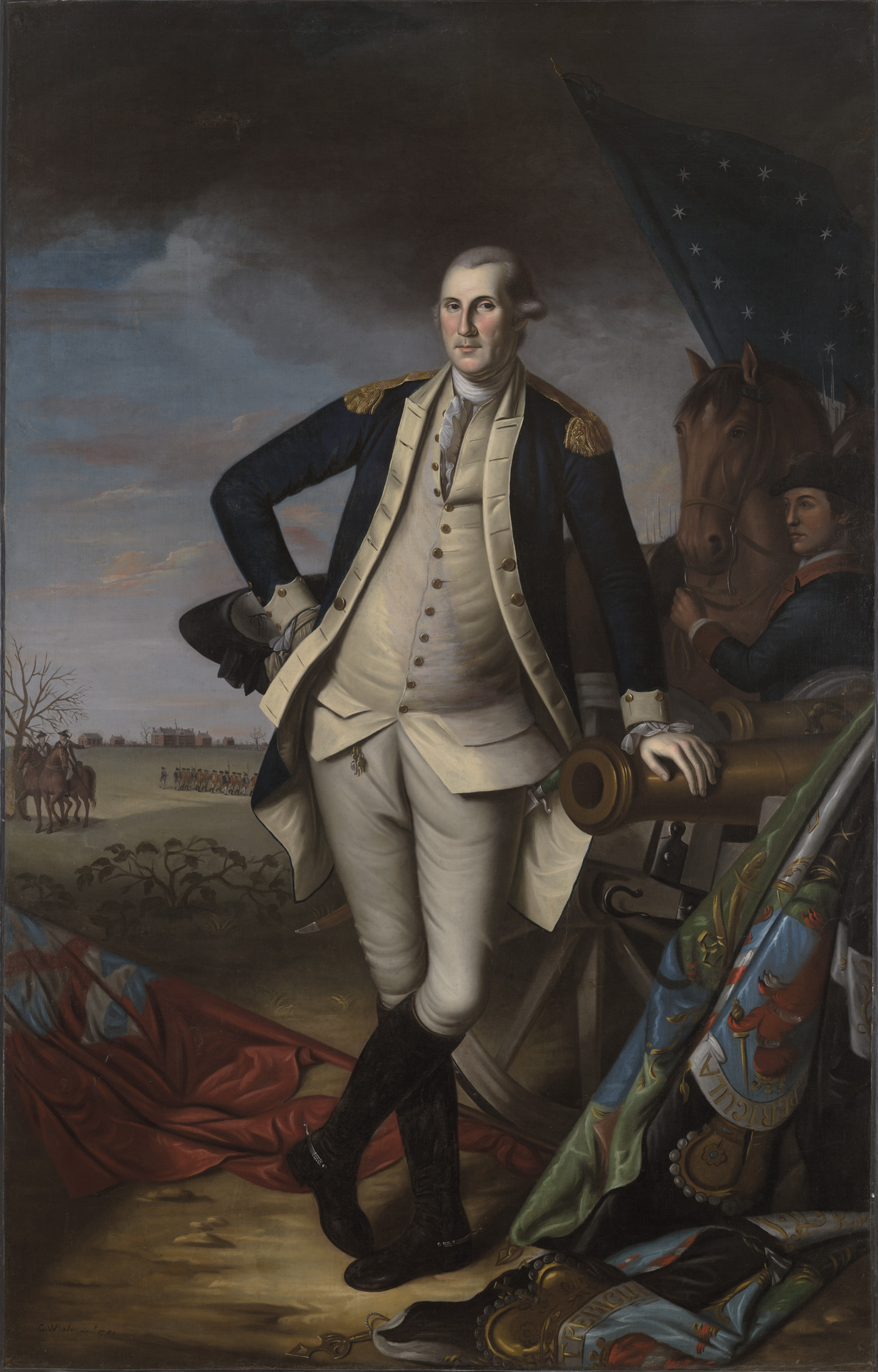Of Arms and Artists: The American Revolution Through Painters' Eyes
Paul Staiti
Art, biography, history
Paul Staiti has an interesting idea. He wants to talk about the uses and meanings of art in a time of revolution. He doesn't completely pull it off, but it's a worthwhile try.
The biggest problem with Of Arms and Artists is that it's kind of all over the map structure-wise. It's sort of chronological, but not exactly. It sort of examines each artist in turn, but skips around a lot (somewhat inevitably, since the artists in question lived interconnected lives). It's thematic in places, but not consistently; the themes--art-as-propaganda, art-as-documentation, art-as-mythmaking, art-as-politics, art-as-history--surface and disappear and resurface.
All the same, these are pretty interesting notions. In an age before photography, a portrait of George Washington would never convey a message as simple as "This is what General Washington looks like." Every portrait, every history painting, every genre painting, was not just an image but an attempt to influence. Staiti is at his best when he's decoding the messages in the paintings. There are often a great many levels of meaning, and some of them are largely lost to a modern viewer.
Also, the art itself is wonderful. Look at the confident glow in John Singleton Copley's portrait of Elkanah Watson, as America's independence is confirmed:
Or Washington's cool, crossed-legged insouciance in Charles Willson Peale's portrait:
It's hard to go too far wrong with this kind of source material.
An odd little book that covers some related territory from a different angle is The Painter's Chair: George Washington and the Making of American Art.


This comment has been removed by the author.
ReplyDeleteMy favorite Revolutionary painting is actually from the early 19th century: Trumbull's "Washington Resigning His Commission".
ReplyDeletehttps://commons.wikimedia.org/wiki/File:General_George_Washington_Resigning_his_Commission.jpg
It's full of all kinds of visual symbolism in praise of Washington and the Republic, but my favorite is Washington's chair. The chair is there to emphasize that Washington is deferentially standing while the members of the Government are seated; but also it has his traveling-cloak spread over it, so it looks very much like a throne, which he's deliberately not sitting in. I saw that painting in the Capitol building when I was in DC and was very struck by it.
Nice! The book talks about it but there's no color plate. Look at the light in the painting: Trumbull has put Washington at the center of the glow, fading towards darkness at the corners. Without being explicit about it, he's given Washington a kind of halo.
Delete